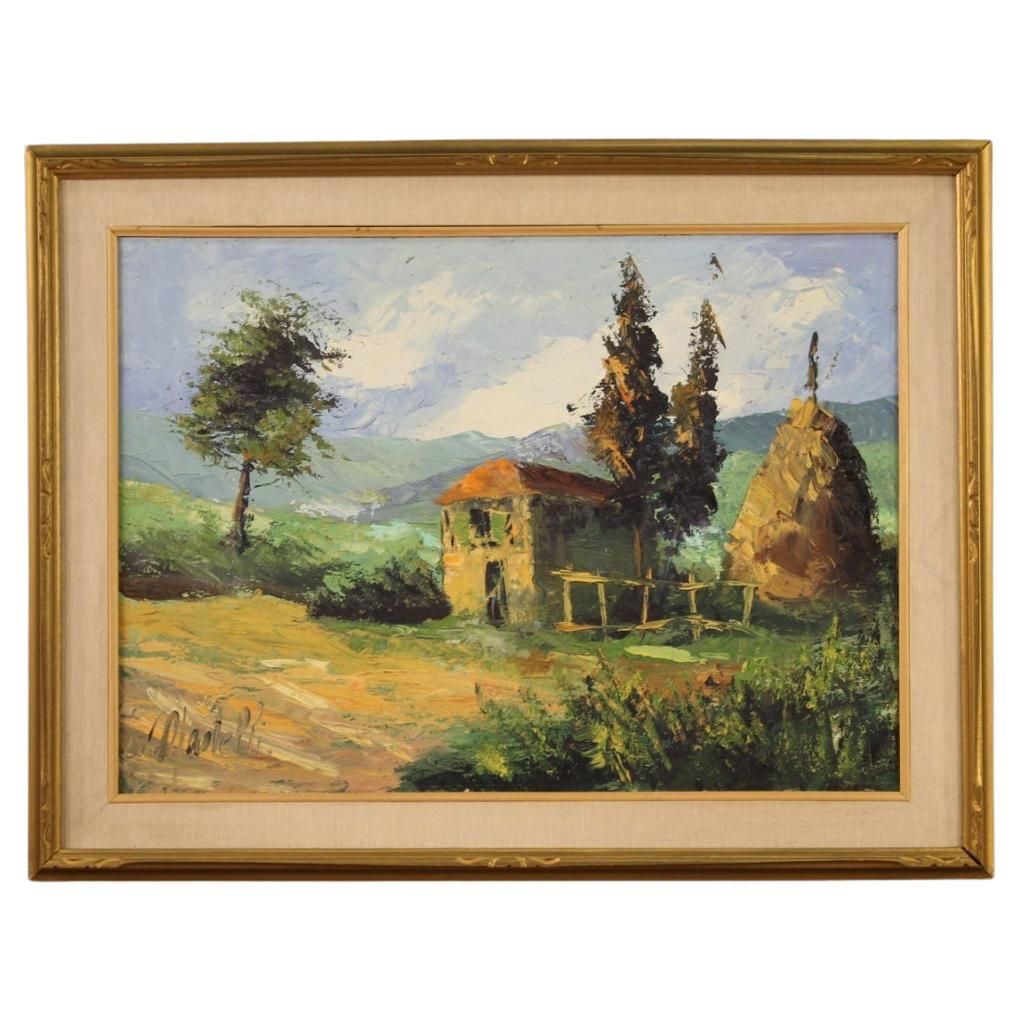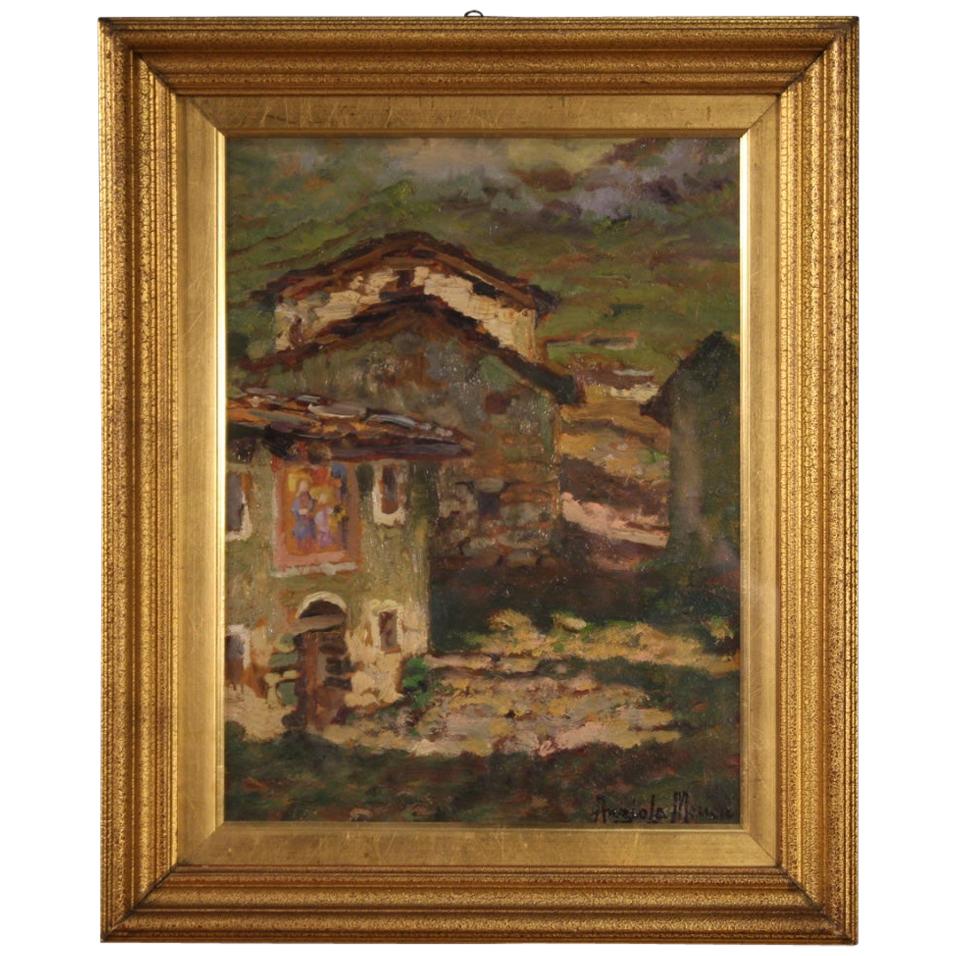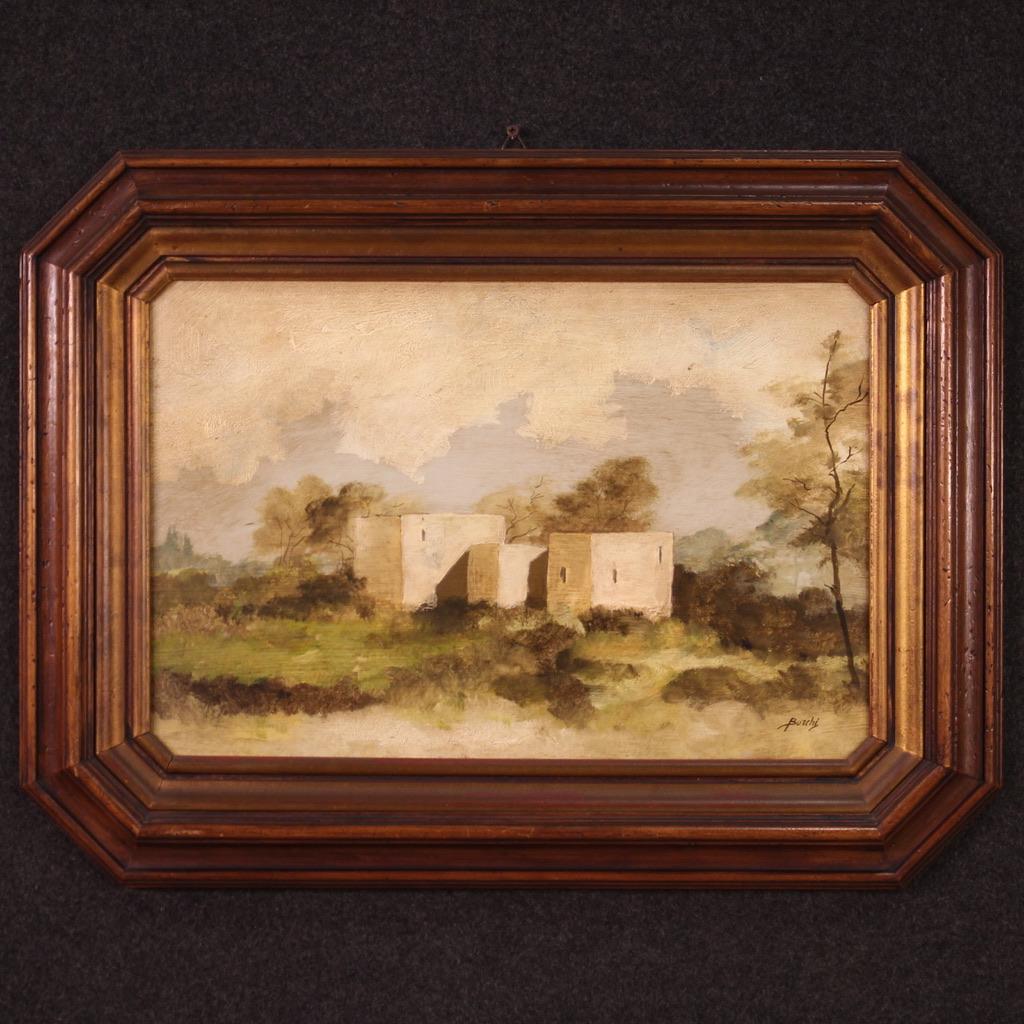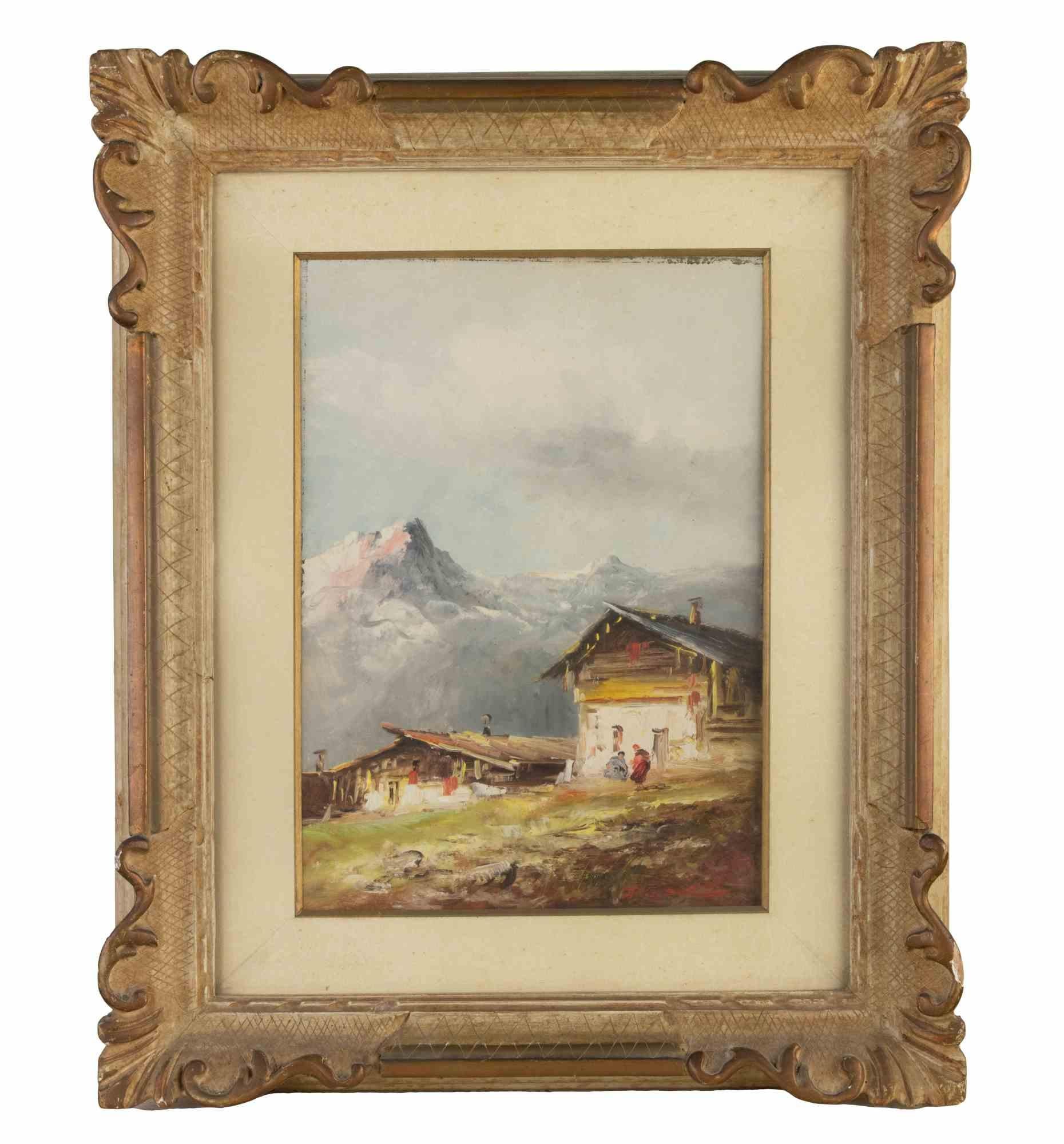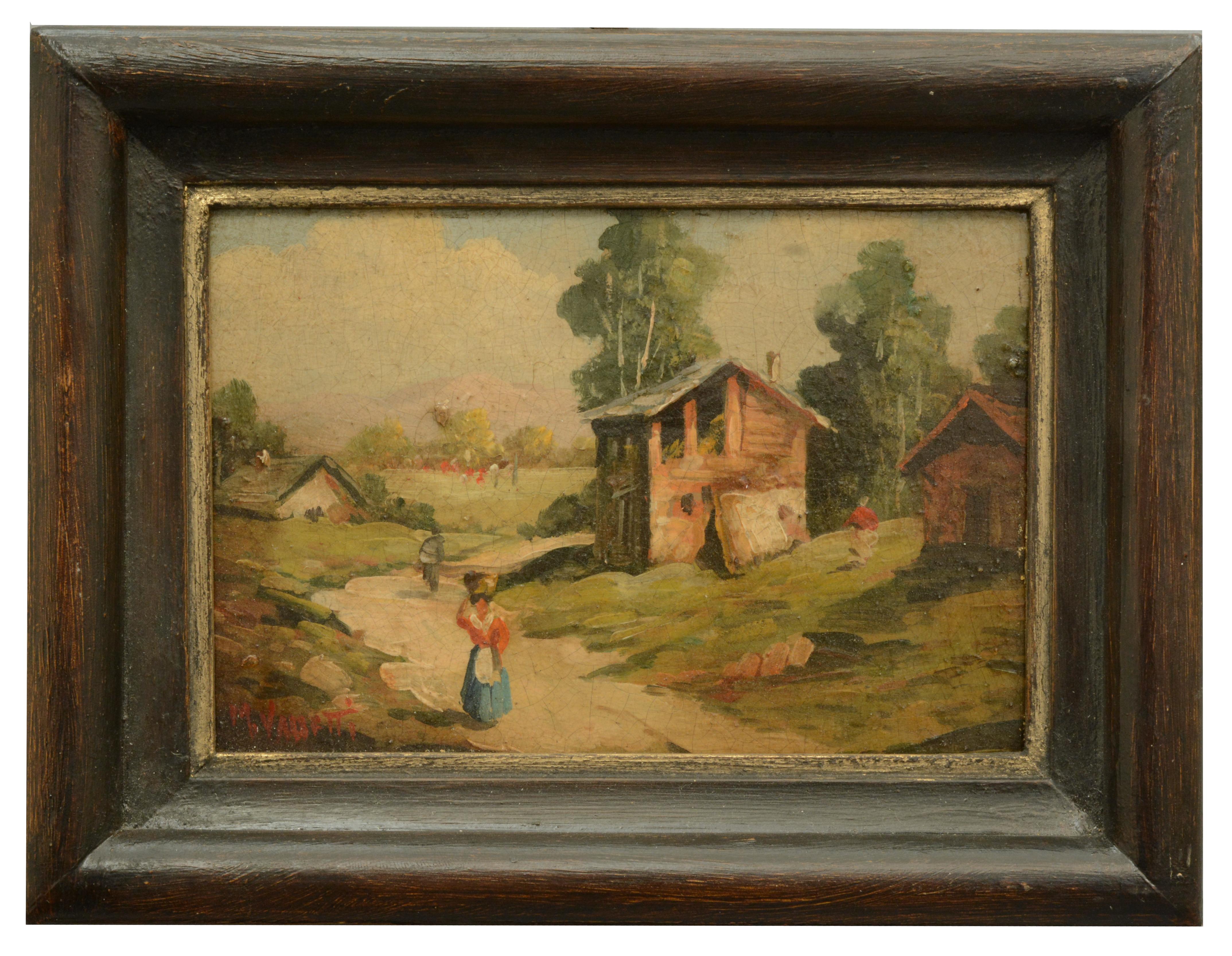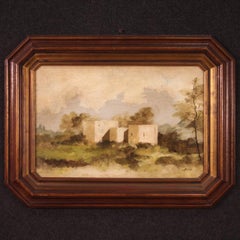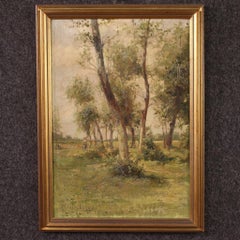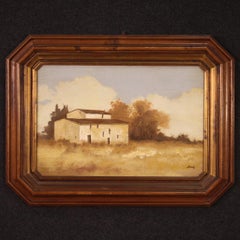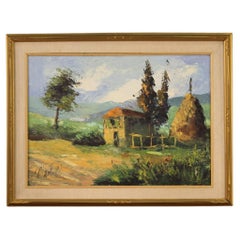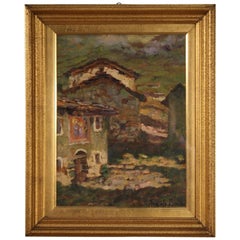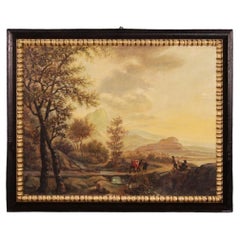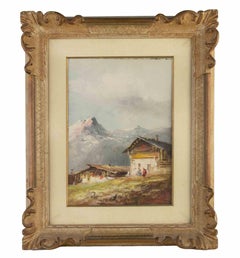Items Similar to 20th Century Oil on Board Italian Signed Painting Landscape with Shepherd, 1950s
Want more images or videos?
Request additional images or videos from the seller
1 of 20
Unknown20th Century Oil on Board Italian Signed Painting Landscape with Shepherd, 1950s
$2,619.06
£1,946.67
€2,200
CA$3,616.20
A$4,010.10
CHF 2,107.01
MX$48,996.61
NOK 26,361.57
SEK 24,744.84
DKK 16,751.90
About the Item
Italian painting from the first half of the 20th century. Artwork oil on panel depicting landscape with shepherd and cows of good pictorial quality. Beautifully sized and pleasantly decorated painting adorned with a sculpted and gilded guilloche frame (bronze tint). Painting signed in the lower center (see photo) signature in the study phase. Painting of particular perspective and good brightness for antique dealers and interior decorators. In good condition. Sight size H 58 x W 72 cm.
About the Seller
No Reviews Yet
Vetted Professional Seller
Every seller passes strict standards for authenticity and reliability
1stDibs seller since 2024
5 sales on 1stDibs
Typical response time: 9 hours
- ShippingRetrieving quote...Shipping from: Vicoforte, Italy
- Return Policy
Authenticity Guarantee
In the unlikely event there’s an issue with an item’s authenticity, contact us within 1 year for a full refund. DetailsMoney-Back Guarantee
If your item is not as described, is damaged in transit, or does not arrive, contact us within 7 days for a full refund. Details24-Hour Cancellation
You have a 24-hour grace period in which to reconsider your purchase, with no questions asked.Vetted Professional Sellers
Our world-class sellers must adhere to strict standards for service and quality, maintaining the integrity of our listings.Price-Match Guarantee
If you find that a seller listed the same item for a lower price elsewhere, we’ll match it.Trusted Global Delivery
Our best-in-class carrier network provides specialized shipping options worldwide, including custom delivery.More From This Seller
View All20th Century Oil on Masonite Italian Signed Landscape Painting, 1960
Located in Vicoforte, IT
Italian painting from the second half of the 20th century. Artwork oil on masonite depicting a view with small houses in the green of good pictorial quality. Painting adorned with an...
Category
1960s Landscape Paintings
Materials
Masonite, Oil
20th Century Oil on Board Italian Signed M. Gheduzzi Landscape Painting, 1940
Located in Vicoforte, IT
Italian painting from the first half of the 20th century. Framework oil on board depicting a wooded landscape with a character of good pictorial quality. Modern frame in carved and g...
Category
1940s Landscape Paintings
Materials
Wood, Oil
20th Century Oil on Board Italian Signed B. Ferrari Landscape Painting, 1930
Located in Vicoforte, IT
Italian painting from the first half of the 20th century. Artwork oil on panel depicting a countryside landscape with a cart in post-impressionist style of good pictorial quality. Pa...
Category
1930s Landscape Paintings
Materials
Oil
20th Century Oil on Masonite Signed Landscape Small House Italian Painting, 1960s
Located in Vicoforte, IT
Italian painting from the second half of the 20th century. Artwork oil on masonite depicting a view with a small house of good pictorial quality. Painting adorned with an octagonal w...
Category
1960s Landscape Paintings
Materials
Masonite, Oil
20th Century Oil on Board Italian Signed Giovanni Bartolena Landscape Painting
Located in Vicoforte, IT
Italian painting from the first half of the 20th century. Oil on board artwork depicting a bright view of a port with a ship of excellent pictorial quality. Small-sized painting ador...
Category
1920s Landscape Paintings
Materials
Oil
20th Century Oil on Board Italian Signed Landscape Painting, 1950s
Located in Vicoforte, IT
Refined Italian painting of the 20th century. Oil on board painting depicting a splendid coastal landscape with maritime pines overlooking a cliff that plunges into the sea. Painting...
Category
1950s Landscape Paintings
Materials
Oil
You May Also Like
20th Century Oil on Canvas Italian Signed Landscape Painting Countryside, 1970
Located in Vicoforte, Piedmont
Italian painting from the second half of the 20th century. Artwork oil on canvas depicting landscape, countryside view in impressionist style of good pictorial quality. Painting of g...
Category
Vintage 1970s Italian Paintings
Materials
Canvas
20th Century Oil on Cardboard Italian Signed Landscape Painting, 1960
Located in Vicoforte, Piedmont
Italian painting from 20th century. Oil painting on cardboard depicting a countryside landscape with houses in impressionist style. Small size framework, for antique dealers and coll...
Category
Mid-20th Century Italian Paintings
Materials
Paper
20th Century Oil on Canvas Italian Bucolic Landscape Painting, 1950
Located in Vicoforte, Piedmont
Italian painting from the mid-20th century. Work oil on canvas (applied on board, see photo) depicting bucolic landscape with characters and city in the background of good pictorial ...
Category
Mid-20th Century Italian Paintings
Materials
Canvas
Landscape - Oil Paint by Athos Brioschi - Mid-20th Century
Located in Roma, IT
Landscape is a modern artwork realized by Athos Brioschi in mid-20th Century
Mixed colored oil on canvas.
Hand signed on the lower margin.
Includes frame: 54x44 cm
Category
Mid-20th Century Contemporary Figurative Paintings
Materials
Oil
COUNTRY SCENE - Italian Oil on Board Painting
By Mario Vassetti
Located in Napoli, IT
Country Scene - Mario Vassetti Italia 2006 - Oil on board cm.10x15.
In this wonderful oil on panel the painter portrays a scene from the life of a small village, with a rural landscape in the background. The painting inspires...
Category
Early 2000s Italian School Landscape Paintings
Materials
Oil, Board
20th Century Oil on Canvas Italian Landscape Signed Painting, 1977
Located in Vicoforte, Piedmont
Italian painting dated 1977. Oil painting on canvas depicting a country view in the Impressionist style. Beautiful and pleasant framework signed and dated in the lower right corner (...
Category
Vintage 1970s Italian Paintings
Materials
Canvas
More Ways To Browse
Guilloche Frame
The Good Shepherd
W Shepherd
Bronze Cow
Bronze Shepherd
Jewish Box
Mayfair Gallery
Nathan James
Socialist Realism Art
Woman Lying Down
18th Century Oil Paintings Of Ships
Anthropomorphic Oil Painting
Formula One Poster
Oyster Oil Paintings
Bergdorf Goodman Display
Boudoir Painting
Distorted Face Paintings
Female Goddess Painting
